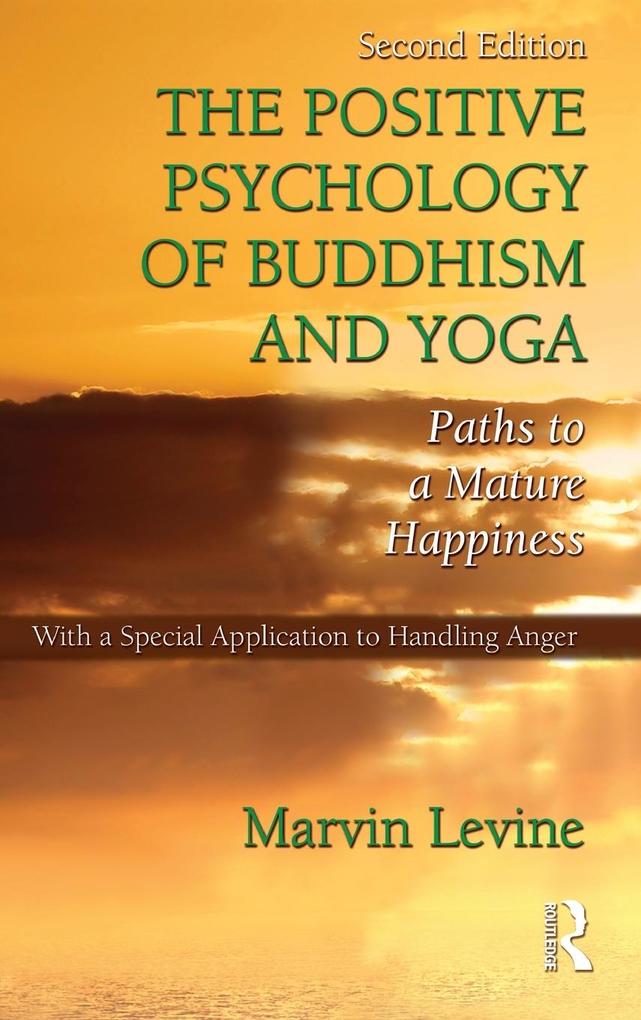
Zustellung: Mi, 09.07. - Sa, 12.07.
Versand in 7 Tagen
VersandkostenfreiBestellen & in Filiale abholen:
First Published in 2010. Routledge is an imprint of Taylor & Francis, an informa company.
Inhaltsverzeichnis
Part 1. Buddhism. 1. King Ashoka's Question: What is Your Secret?: A tale about the conversion of King Ashoka to Buddhism. 2. Maturity and Serenity: The Buddhist approach to attaining these ideals. 3. The Story of Siddhartha: The life of Prince Siddhartha and his transformation into the Buddha. 4. The Hindu Context: The world in which the Buddha was raised; the influential ideas. 5. The Core of the Buddha's Teachings: An overview of the Four Noble Truths; a comparison to the modern scientific outlook. 6. The Noble Truth of Dukkha (Suffering), Part 1: Suffering and Impermanence: The meaning of suffering; impermanence and the potentiality for suffering. 7. The Noble Truth of Dukkha, Part 2: Caught in the Causal Matrix: Dukkha as helplessness, as "caughtness" in a matrix of forces; a comparison to the western concept of determinism. 8. The Noble Truth of Tanha (Craving): Cravings as the cause of suffering; the meaning of cravings. 9. The Noble Truth of Nirvana (Liberation), Part 1: Conquer the Beasts Within: The cravings and their transformation; the western concept of reinforcement; detachment from goals. 10. The Noble Truth of Nirvana, Part 2: The Nature of Attachment: Attachment versus enjoyment; attachment versus devotion. 11. The Buddha: the Compassionate One: Some implications of the view expressed in the First Three Noble Truths, particularly the necessity for compassion; a comparison to clinical psychology. 12. Supermaturity: The Buddhist ideals of living; a comparison to Western ideals. 13. Anatman Reconsidered: You Are Not Your Mind: The essential self (cf. Buddha-Nature); a comparison to the Western (Behaviorist) view. 14. The Noble Truth of Magga (The Path), Part 1: Wisdom and Ethics: The first five branches of the eight-fold path 15. The Noble Truth of Magga, Part 2: Mental Discipline: Right Effort and Mindfulness; a variety of meditative practices 16. Buddhist Problem Solving: Buddhist solutions to political and personal problems, contrasted with traditional solutions Part 2. Yoga. 17. Yoga and Buddhism: Atman as the distinguishing feature; various types of Yoga. 18. I Discover Hatha Yoga: How I came to the practice of Hatha Yoga; breathing and postures; benefits of the practice. 19. Savasana: The particular benefits of Savasana (the Dead-Weight Pose); its relation to Transcendental Meditation and to Benson's Relaxation Response. 20. The yogic state, Part 1: Immersion: The "inner" practice of Hatha Yoga, of learning to maintain focused attention; a comparison to Western approaches. 21. The yogic state, Part 2: Transforming Judgment: Replacing pejorative and prideful judgments with a more dispassionate assessment; Western attitudes toward judgment. 22. The yogic state, Part 3: Life is Where You Find it: Generalizing the state (calm, immersed, judgment-free) practiced in Hatha Yoga to all of living. 23. yogic Theory: The Unenlightened Mind: The components of the mind before any enlightenment has occurred. 24. The Eight Angas, Part 1: The Practices: The proper attitudes (Yamas and Niyamas) that are cultivated and practiced 25. The Eight Angas, Part 2: The Experiences: The deepening levels of experience that go to make up the yogic state. 26. yogic Theory: The Enlightenment Mind: The components of the fully enlightened mind. 27. yogic Problem Solving: yogic solutions to political and personal problems, contrasted with traditional solutions Part 3. Western Psychology. 28. Buddhism, Yoga, and Western Psychology: A summary of the similarities between East and West; Buddhism as empiricism. 29. Mindfulness and Right Thoughts: Traditional psychotherapy seen as mindfulness training; the treatment of "wrong thoughts" in Cognitive Therapy. 30. Problem Solving as Compassionate Action: Replacing anger and fear with the problem-solving stance. 31. Empathic Assertiveness as Right Speech: Principles of criticizing with concern for the rights of others. 32. Psychological Applications of Eastern Methods: Mindfulness training as a therapeutic procedure; mutual Eastern and Western Influence Part IV: Handling Anger. 33. The Nature of Anger: A broad definition, ranging from irritation to rage; the variables of intensity, duration, and threshold. 34. Anger: Assumptions and Levels of Expression: The assumptions underlying the present treatment; levels of self-transformation to which we can aspire. 35. A Schematic, Physiological Model: A sketch of changes in the nervous system when provoked; the effects of breathing, relaxing, and cognitive reinterpretation. 36. General Methods for Decreasing Anger: Techniques that raise the threshold so that we're less likely to become angry. 37. Specific Methods, Part I: Right Views of Others: Seeing others properly, especially the forces at work; the sense in which provocations are not personal. 38. Specific Methods, Part 2: Changing One's Own Attitudes: Seeing oneself properly: Question beliefs, develop broad tolerances, learn what matters. 39. Specific Methods, Part 3: When Anger Occurs: The importance of waiting, breathing, relaxing, and rehearsing; the role of cognitive techniques Afterword References Additional Readings Author Index Subject Index
Produktdetails
Erscheinungsdatum
14. Juli 2009
Sprache
englisch
Auflage
2. Auflage
Seitenanzahl
290
Autor/Autorin
Marvin Levine
Verlag/Hersteller
Produktart
gebunden
Gewicht
574 g
Größe (L/B/H)
235/157/20 mm
ISBN
9781848728509
Entdecken Sie mehr
Bewertungen
0 Bewertungen
Es wurden noch keine Bewertungen abgegeben. Schreiben Sie die erste Bewertung zu "The Positive Psychology of Buddhism and Yoga" und helfen Sie damit anderen bei der Kaufentscheidung.









